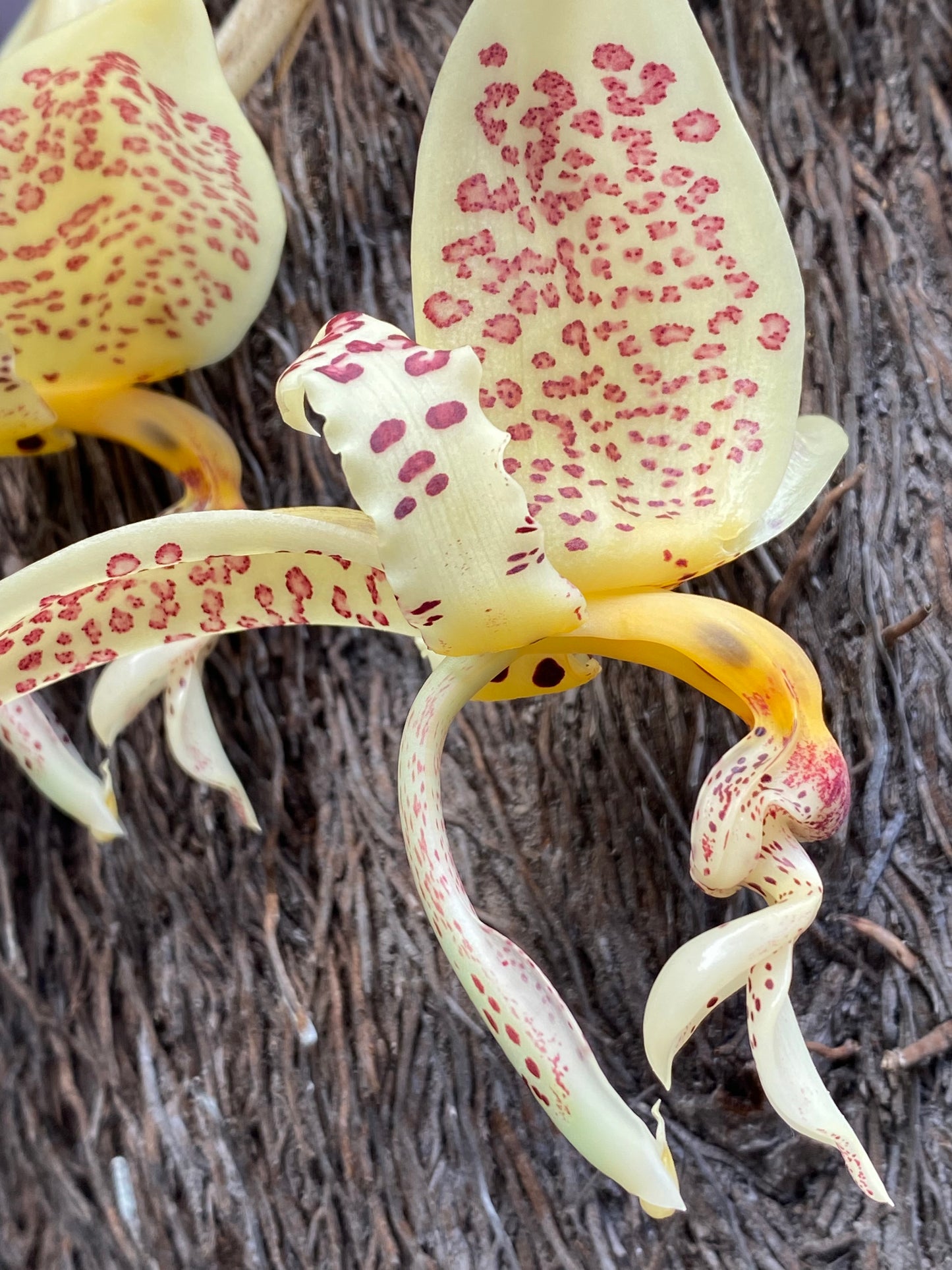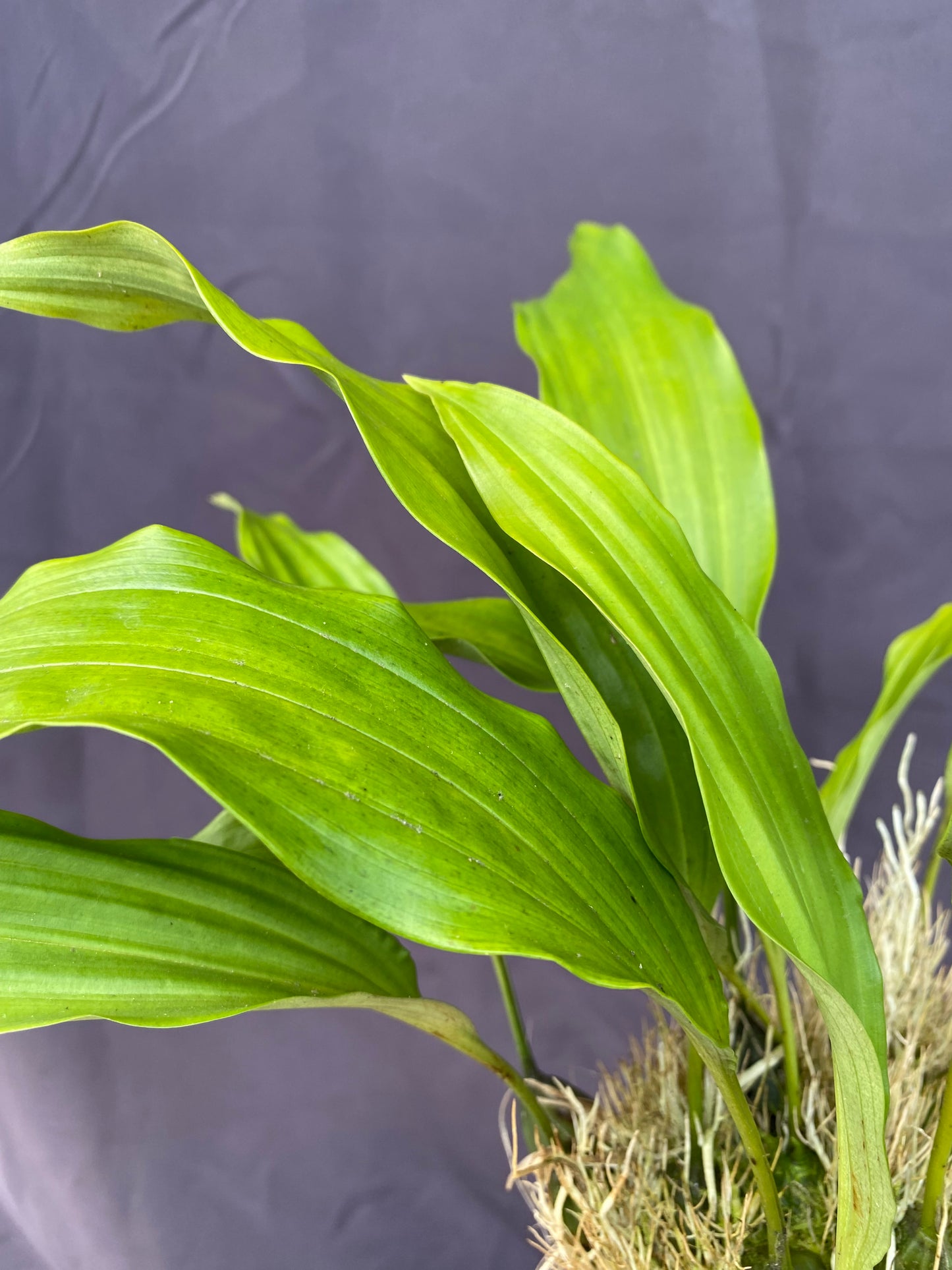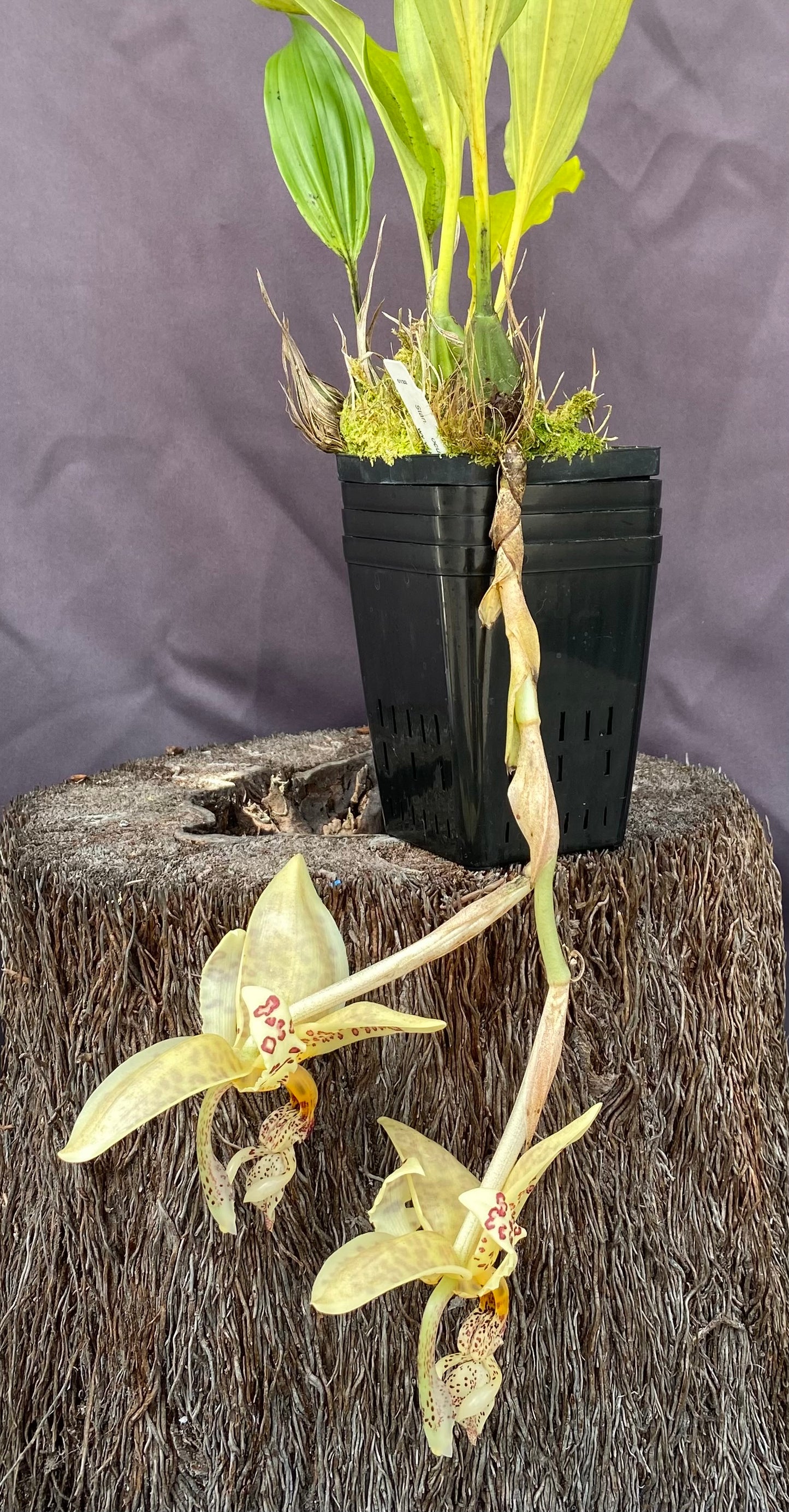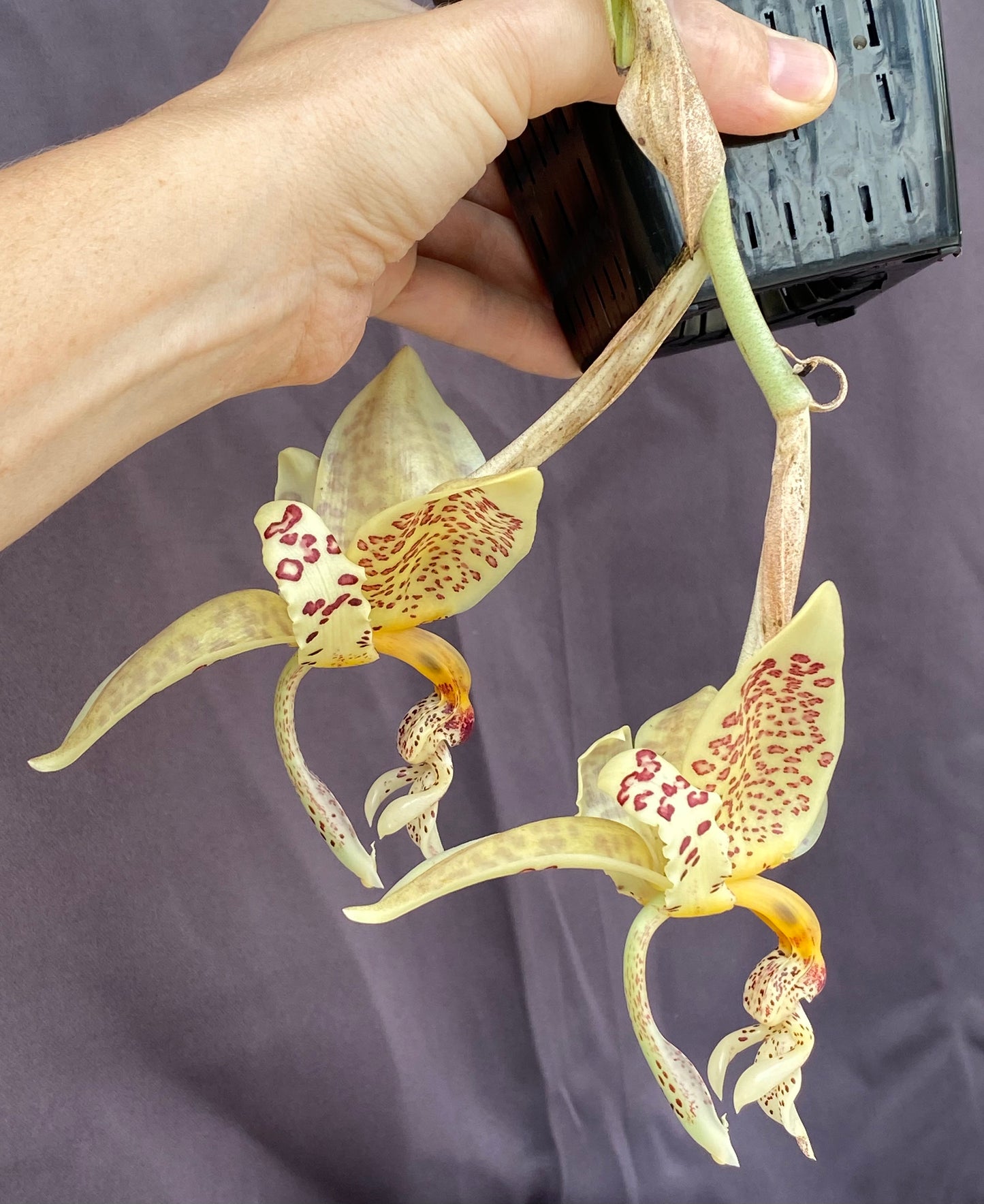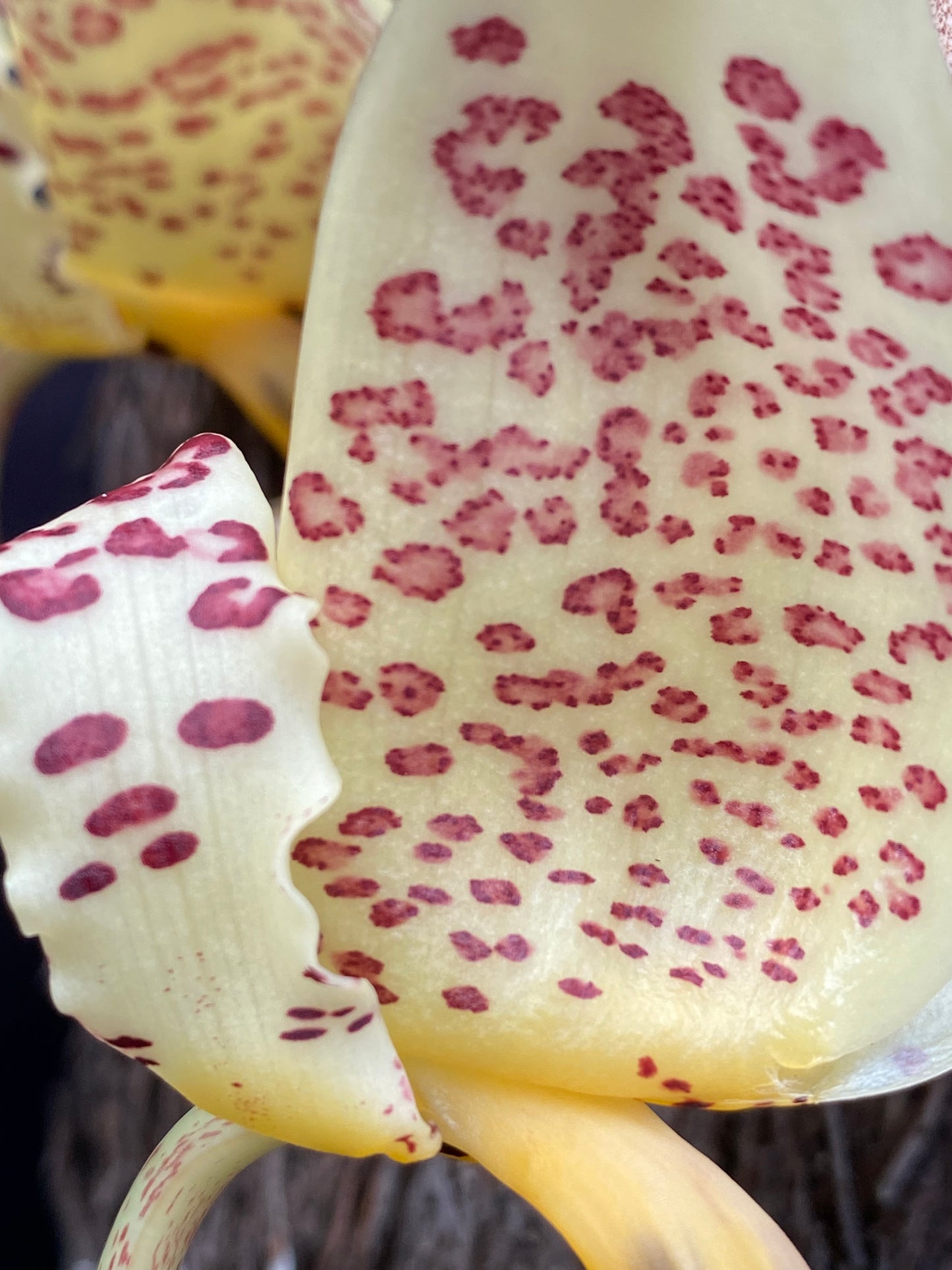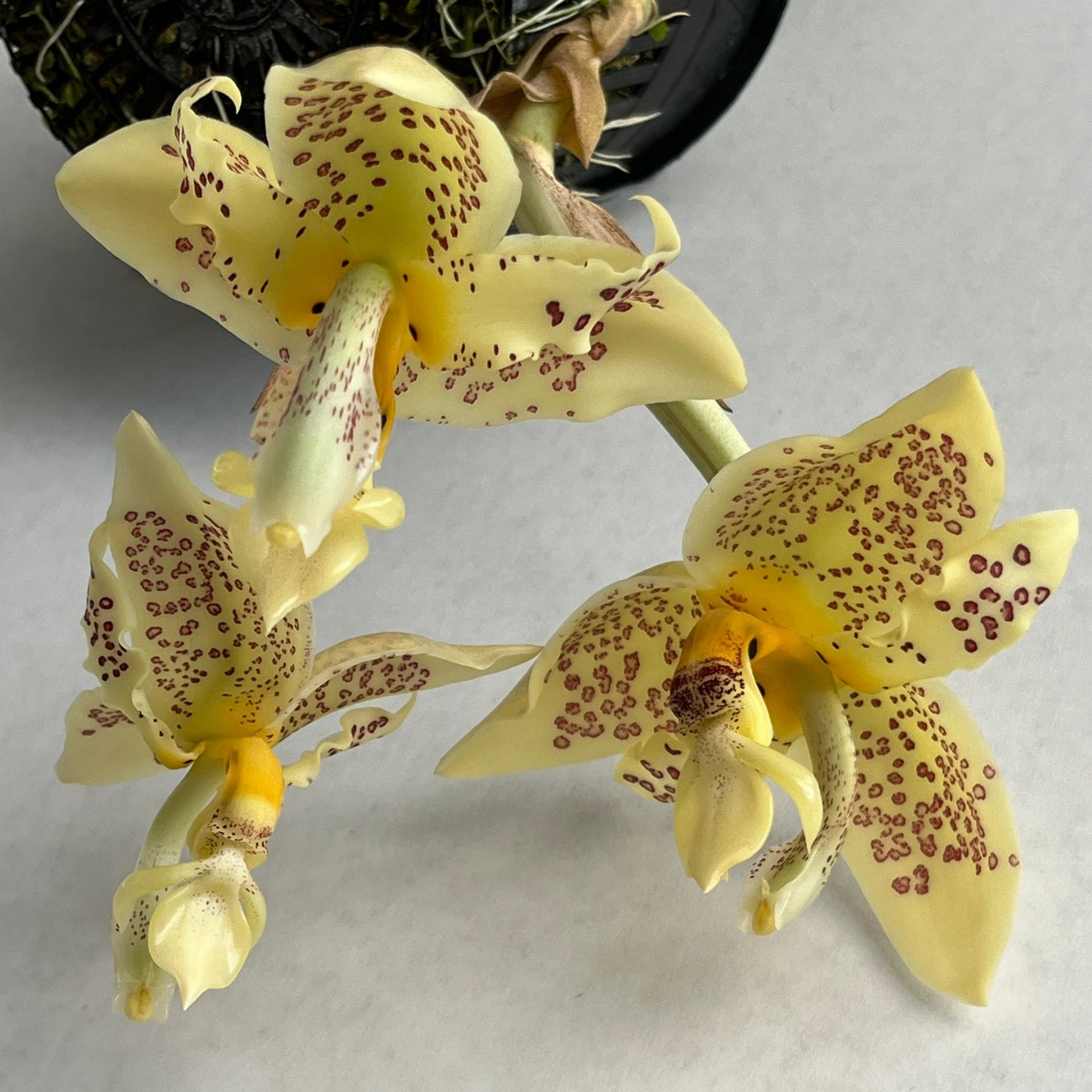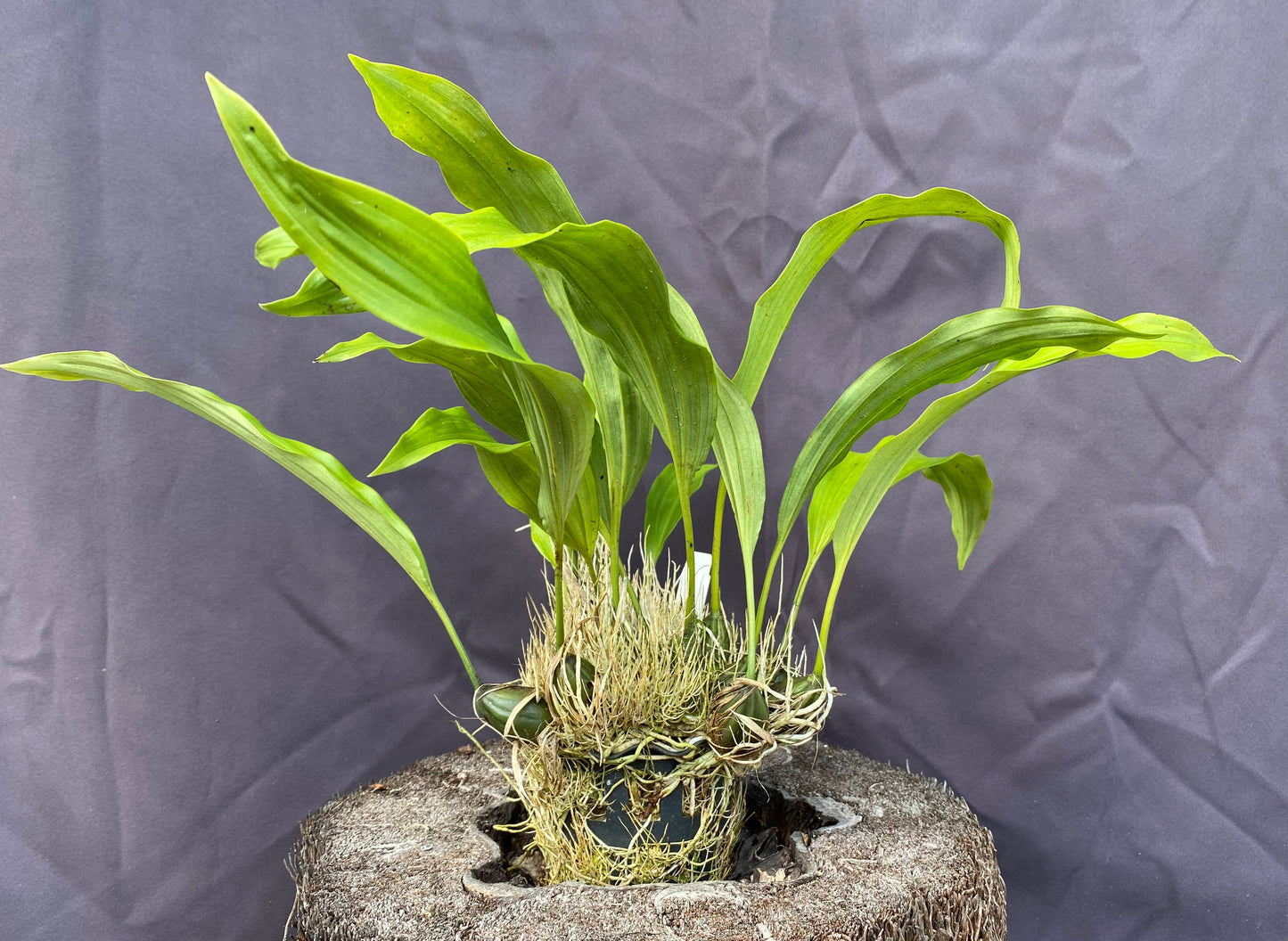Kalapana Orchid Farm
Stanhopea oculata
Stanhopea oculata
Couldn't load pickup availability
Stanhopea oculata is a true gem of the orchid world. If you've ever seen this beauty in bloom, you'll immediately understand why it's so captivating. While it doesn't have a specific common name, its moniker "oculata" refers to the eye-like spots on its lip, which are quite distinct and some would even say, mesmerizing.
This intriguing species hails from a wide swath of Central and South America, gracing humid forests from Mexico all the way down to Colombia and southeastern Brazil. You'll find it growing as an epiphyte, perched on trees, or occasionally as a terrestrial on cliffsides, typically at elevations ranging from 3,300 to 9,800 feet. This widespread habitat means it's adaptable to a decent temperature range, generally thriving in warm to cool-intermediate conditions. Day temperatures typically hover around 65°F to 80°F, with nights a bit cooler, perhaps 50°F to 60°F.
Now, let's talk about the main event: the flower. These are truly impressive, appearing on pendulous inflorescences that can reach up to 10 inches long, often with 2 to 7 flowers per spike. The individual flowers are a substantial 5 inches across, truly a statement piece! The sepals and petals are usually a creamy white or pale yellow, often adorned with charming purple or reddish-brown spots. The most striking feature, of course, is the hypochile (the lower part of the lip) with its characteristic "eyes" – those dark, contrasting spots that give the species its name. And the scent! Oh, the scent is a delightful, strong vanilla, sometimes with a hint of mint or chocolate, truly a treat for the senses, especially in the morning. These blooms, while spectacular, are fleeting, usually lasting only about 3 to 5 days, so you'll want to be ready when they open.
The foliage is equally robust. Stanhopea oculata produces large, upright pseudobulbs, ovoid in shape, which can grow quite large, sometimes up to 2 feet tall including the leaf. Each pseudobulb supports a single, prominent, pleated leaf. These leaves are typically elliptic or broadly lanceolate, measuring anywhere from 10 to 28 inches long and 3 to 8 inches wide. The substantial size of the pseudobulbs and leaves gives the plant a commanding presence even when not in flower. Blooming season generally occurs from late summer to early fall, often peaking in August and September in the Northern Hemisphere.
Care Instructions:
Light: Provide bright, indirect light. East or west-facing windows are often ideal, or diffused light from a south-facing window. Avoid direct, harsh midday sun, which can burn the leaves.
Water: Stanhopea oculata prefers to be kept consistently moist during its active growing season, but not waterlogged. Allow the potting medium to approach dryness between waterings, but do not let it dry out completely. Reduce watering slightly in the cooler, darker months, but never let the plant desiccate.
Temperature: Warm to intermediate conditions are best. Daytime temperatures should ideally range from 65°F to 80°F, with nighttime temperatures between 50°F and 60°F.
Humidity: High humidity, between 60% to 80%, is beneficial for optimal growth and to prevent leaf desiccation. Misting regularly or using a humidity tray can help achieve this. Good air circulation is also important, especially with high humidity.
Potting Medium: Due to their pendulous inflorescences that emerge from the bottom of the pot, Stanhopea oculata is best grown in slatted baskets lined with sphagnum moss or a very coarse, fast-draining orchid mix. A mix of medium-grade fir bark, perlite, and some sphagnum moss works well. Repot every 2 to 3 years as new root growth appears, typically in the spring or after flowering.
Share
